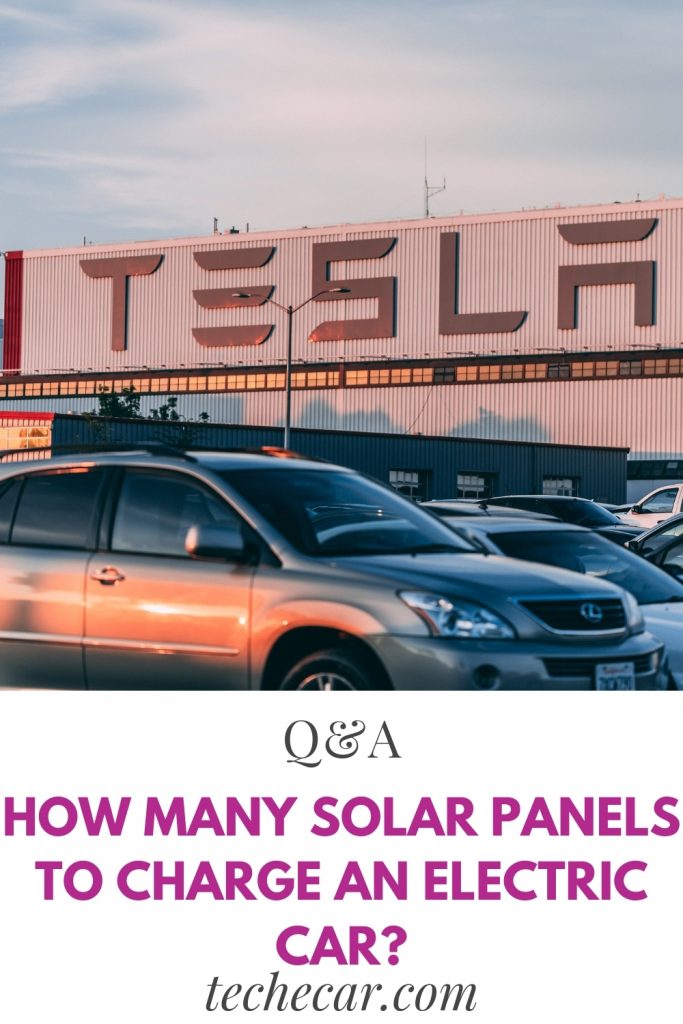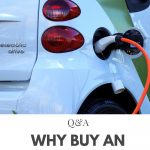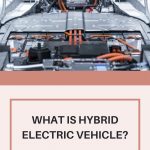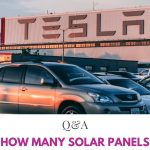How Many Solar Panels To Charge An Electric Car?


Topi: How Many Solar Panels To Charge An Electric Car?
Many of us are switching to electric vehicles (EVs) to save money and protect the environment. If you own an electric vehicle or plan to buy one, you will probably want to buy solar panels and an electric vehicle charging port for your home.
These home solar panel installations make it easy to charge your electric vehicle without having to go to a charging station and sit down while the car is charging. But how many solar panels do you need to charge your electric car? Read full article on below:
Electric vehicle charging options
With the increasing number of electric vehicles on the road, there are still not enough electric vehicle charging stations available to the public. While that may change in the future, having a charger at home is almost essential at this point. And the cheapest way to do it is to use solar panels in conjunction with your charging station.
If you don’t have solar power, you’re at home; the charging stations will draw power from your local electrical grid. Obviously, the cost of this electricity will be the same as any other electricity consumed by your home.
Using an average cost of $ 0.11 per kilowatt-hour, the Department of Energy estimates that the cost of fully recharging an electric vehicle with a range of 70 miles would be about the same as that of an air conditioner for six hours.
And in the long run, it uses as much energy throughout the year as an electric water heater. Even then, powering your electric vehicle with solar panels can be a very smart and cost-effective solution for both solar panel owners and electric vehicle owners.
While your current solar panel system may generate enough electricity for your home and a new electric vehicle, you may also need to install additional panels to fully power your car with solar energy.
To understand this, you need to consider the size and model of your electric vehicle, the battery capacity, and the efficiency of your solar panels. It is not as difficult as it sounds, and we will help you solve it in a moment.
Electric vehicle charging systems and solar panels.
Combining an electric vehicle charging station with your home solar system offers a number of benefits, including recharging your electric vehicle at a lower cost. If you are installing a solar panel system to power your electric car, you will need this type of combination setup.
Solar inverters are an important part of this overall combined system. Before the energy generated by your solar panels can be used by your home appliances and appliances, it must first be converted from direct current (direct current) to alternating current (alternating current). The same is true when you power your electric vehicle with solar energy. Fortunately, SunPower panels include the necessary micro-converters to do this conversion.
Electric car battery size?
How much electricity will actually be needed for this charging process? If you underestimate your power needs, you may have a hard time charging your car with solar power alone, and you will also need to get power from your utility company.
For starters, the amount of electricity you will need to power your electric vehicle is highly dependent on the capacity of the battery. The battery capacity of an electric vehicle is measured in kWh (kilowatt-hours).
This measurement can range from 20 less to 100 or more. For example, while a BMW i3 battery has a capacity of only 33 kWh, and the updated Tesla Model S has a battery with a capacity of 100 kWh. The higher the capacity of your battery, the more electricity you will need (which is not a ton yet).
How many solar panels to charge an electric car?


As noted above, the number of panels that are specifically needed to charge an electric vehicle will depend on the size of your vehicle’s battery. But to examine this question, we will use the standard Tesla Model S as a benchmark for estimates. This particular Tesla has a battery with a capacity of 75 kWh. Your specific needs for your particular car may differ from these, but you can find this information on your manufacturer’s website.
So, how many solar panels do you need to charge an electric car? First, look at how much energy an individual solar panel can produce. This amount of power generation is highly dependent on the size and efficiency of the solar panel, as well as the material from which it is made. If you don’t already have a panel, SunPower panels have the highest efficiency and longest warranty.
The average 250W solar panel can generate around 30-40 kWh of AC power each month. Let’s use the lowest number (30 kWh) in our calculations.
Since a single low-efficiency solar panel produces around 1 kWh per day of AC electrical energy, this would indicate that you will need to install up to 75 solar panels to generate electricity in order to power your Tesla Model S every day. Start. The charging process with a battery completely depleted of electricity.
However, since the average driver will drive around 37 miles per day, that translates to around 12 kWh of electricity. With that in mind, a much more realistic set would require around 12 solar panels. And even that is still a conservative estimate based on the use of low-efficiency solar panels.
If you choose high-efficiency solar panels, the total number of panels you will need to charge your electric vehicle can decrease even more. On top of that, if you were driving less than 30 miles per day, the number of signs would decrease even more.
Therefore, a realistic assessment of not only your car battery capacity but also your car usage and the efficiency of your solar panels, can have a significant impact on how many solar panels you actually need. The approximate quantity for most cars is between 6 and 12 additional panels.
Future planning is the key
If you plan to install solar panels in your home and you think you will one day have an electric vehicle, it is a good idea to oversize the system now. Even if you don’t get an electric vehicle, it will make sure you don’t use electricity from your local utility company and keep your bills low.
Conclusion
Ultimately, solar panels are the cheapest way to power your electric vehicle. And until there are not as many charging stations as there are gas stations, solar panels with home chargers are the best option to recharge your car battery.
Based on current technology, you will find that 6 to 12 solar panels will produce enough power to meet your vehicle’s daily needs. And by installing solar panels to charge your car, you save money and help protect the environment. Also, it is beneficial for everyone and if you use SunPower panels, as we have financing options that often cost no money out of pocket.
How Many Solar Panels To Charge An Electric Car – Video
Recommended Article:
The New Tesla Model 3 Increases Its Autonomy to 614 km
Why should i buy an electric car?
What is the fastest electric car?






[…] How Many Solar Panels To Charge An Electric Car? […]
[…] How Many Solar Panels To Charge An Electric Car? […]
[…] How Many Solar Panels To Charge An Electric Car? […]
[…] Remove the door panel. Locate retaining screws, usually behind covers or gaskets, and unscrew. The process of removing the door panel varies depending on your particular car. […]
[…] Electric cars can now widely reach and exceed speeds in excess of 100 kilometers per hour, something that dispels the false belief that electric vehicles are slow. […]
[…] you manually move an electric car […]
[…] insurers consider many factors when setting rates for drivers, these are the main reasons they charge so much for car […]
[…] or a power optimiser. Microinverters and power optimisers are positioned beneath the solar panels, whereas a string inverter can be installed indoors or outside, depending on the installer’s […]
[…] situations are common, and solar panels are well-equipped to manage […]
[…] When compared to Enphase microinverters, the SolarEdge approach has higher scaling constraints. SolarEdge systems are constrained by the size of the central inverter, which can only accept a speci…. […]
[…] but it still has a long way to go before its Renewable Portfolio Standards are finalised. Solar panel costs have declined considerably, as seen in the Swanson figure below, making solar an intelligent […]
[…] that you live in one of the top ten solar-friendly states? Due to the falling costs of rooftop solar panels and energy back-up systems and Nevada’s abundant year-round sunshine, partnering with a Las […]